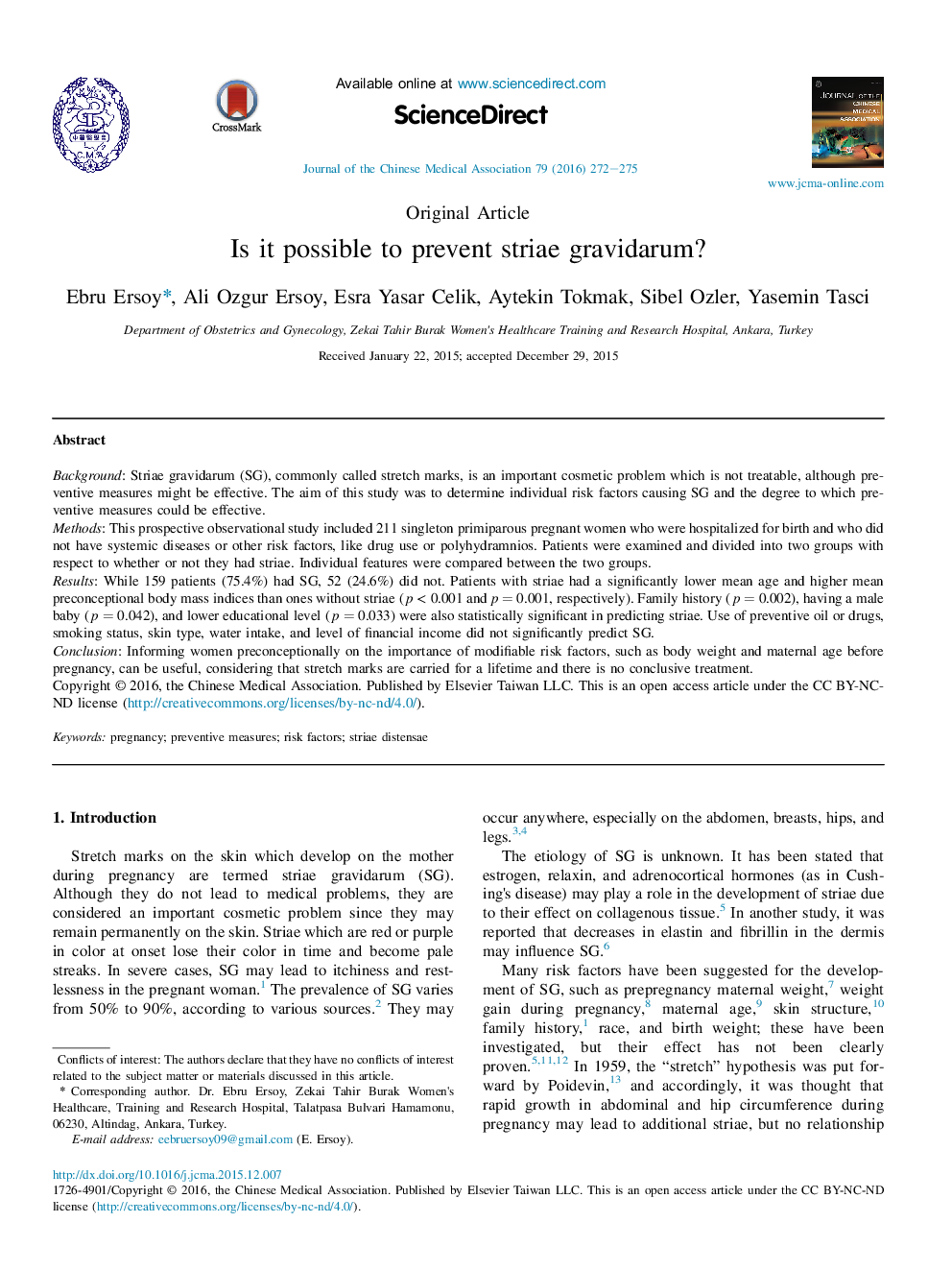| Article ID | Journal | Published Year | Pages | File Type |
|---|---|---|---|---|
| 3475729 | Journal of the Chinese Medical Association | 2016 | 4 Pages |
BackgroundStriae gravidarum (SG), commonly called stretch marks, is an important cosmetic problem which is not treatable, although preventive measures might be effective. The aim of this study was to determine individual risk factors causing SG and the degree to which preventive measures could be effective.MethodsThis prospective observational study included 211 singleton primiparous pregnant women who were hospitalized for birth and who did not have systemic diseases or other risk factors, like drug use or polyhydramnios. Patients were examined and divided into two groups with respect to whether or not they had striae. Individual features were compared between the two groups.ResultsWhile 159 patients (75.4%) had SG, 52 (24.6%) did not. Patients with striae had a significantly lower mean age and higher mean preconceptional body mass indices than ones without striae (p < 0.001 and p = 0.001, respectively). Family history (p = 0.002), having a male baby (p = 0.042), and lower educational level (p = 0.033) were also statistically significant in predicting striae. Use of preventive oil or drugs, smoking status, skin type, water intake, and level of financial income did not significantly predict SG.ConclusionInforming women preconceptionally on the importance of modifiable risk factors, such as body weight and maternal age before pregnancy, can be useful, considering that stretch marks are carried for a lifetime and there is no conclusive treatment.
